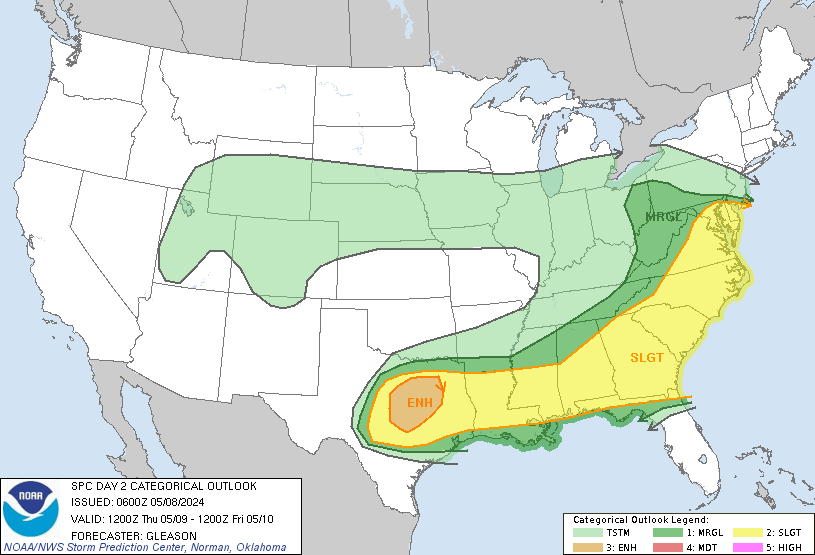rolltide_130
Member
A potentially dangerously active pattern during the month of April looks to get going with this upcoming system this week. While this currently doesn't look to be a higher end threat in itself (That comes with the next system..), this could potentially prime Dixie for the upcoming threats down the road, while also being a lower end severe threat (Which could quickly trend more substantial if the trend is for the trough to phase..)
I'll post the morning AFD from one of our own members here at TW as I'm currently in a timecrunch and unable to look at models:
The potential for strong to severe storms may be increasing for
Tuesday night into Wednesday morning as low amplitude shortwaves
in the northern and southern streams eject eastward across the
Plains. Currently it appears that these shortwaves will only
partially phase, but there is quite a bit of model variability
between the much more phased UKMET and the GFS. The ECMWF is
perhaps the middle ground. Significant CAPE is expected to surge
northward from the western Gulf into the Lower Mississippi Valley
ahead of the approaching front. The positive tilt nature of the
front suggests convection will not be pre-frontal and will be
generated by the front itself. The strongest instability to remain
to our west, but CAPE values around 1000 J/kg, as suggested by the
ECMWF, would support a potential for isolated damaging winds along
a line of storms. If this system becomes more phased as shown by
the UKMET, the severe weather threat would increase substantially.
A low confidence risk of severe storms will be placed in the HWO.
I'll post the morning AFD from one of our own members here at TW as I'm currently in a timecrunch and unable to look at models:
The potential for strong to severe storms may be increasing for
Tuesday night into Wednesday morning as low amplitude shortwaves
in the northern and southern streams eject eastward across the
Plains. Currently it appears that these shortwaves will only
partially phase, but there is quite a bit of model variability
between the much more phased UKMET and the GFS. The ECMWF is
perhaps the middle ground. Significant CAPE is expected to surge
northward from the western Gulf into the Lower Mississippi Valley
ahead of the approaching front. The positive tilt nature of the
front suggests convection will not be pre-frontal and will be
generated by the front itself. The strongest instability to remain
to our west, but CAPE values around 1000 J/kg, as suggested by the
ECMWF, would support a potential for isolated damaging winds along
a line of storms. If this system becomes more phased as shown by
the UKMET, the severe weather threat would increase substantially.
A low confidence risk of severe storms will be placed in the HWO.









